Gynacantha (A) sextans McLachlan, 1896
Dark-rayed Duskhawker
Type locality: Mongo-ma-Lobah, Cameroon
Diagnosis
Male is not particularly close to other Gynacantha species, however, belongs to the africana-group by (a) rim of metastigma black, contrasting with colour of thorax; (b) brace veins absent; (c) largely 2-3 cell-rows between R2 and R3 proximal to Pt; (e) inner border of cerci bisinuous, concave roughly 2/3 from base; (d) anal triangle of 3-6 cells. Set apart from the group by (1) wing bases with dark subcostal rays, rather than tinted without subcostal rays; (2) mainly 2-3, rather than 4-5 cell-rows in fork of IR3 in all wings; (3) cerci taper to slender point, rather than being widened and sharply cut-off at end. [Adapted from Dijkstra & Clausnitzer 2014]
Habitat description
Standing and probably often temporary waters shaded by forest. Probably often with coarse detritus and a soft (like muddy) bottom. From 0 to 1300 m above sea level, but mostly below 900, although possibly up to 2600.
Distribution
 Appendages (dorsal view) |
 Abdominal segment 2 (ventral view) |
Map citation: Clausnitzer, V., K.-D.B. Dijkstra, R. Koch, J.-P. Boudot, W.R.T. Darwall, J. Kipping, B. Samraoui, M.J. Samways, J.P. Simaika & F. Suhling, 2012. Focus on African Freshwaters: hotspots of dragonfly diversity and conservation concern. Frontiers in Ecology and the Environment 10: 129-134.
Barcode specimen(s):
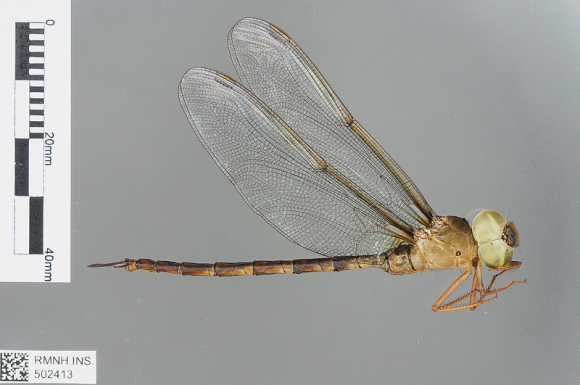
Male; Democratic Republic of Congo, Province Orientale, Lower Aruwimi © Dijkstra, K.-D.B.
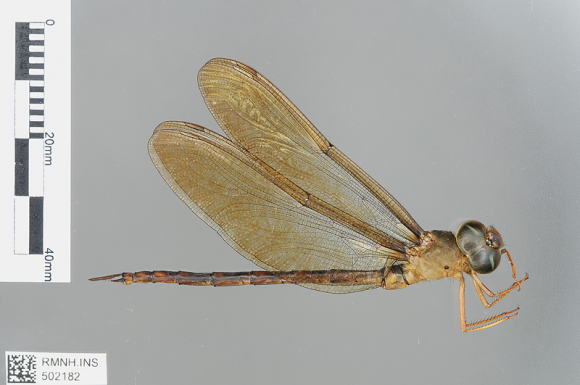
Male; Democratic Republic of Congo, Province Orientale, Lower Aruwimi © Dijkstra, K.-D.B.
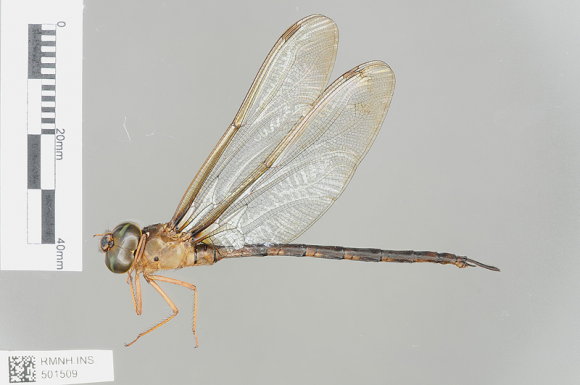
Male; Liberia, Grand Gedeh County, Putu Iron Ore Mining concession © Dijkstra, K.-D.B. & A. Dayeker
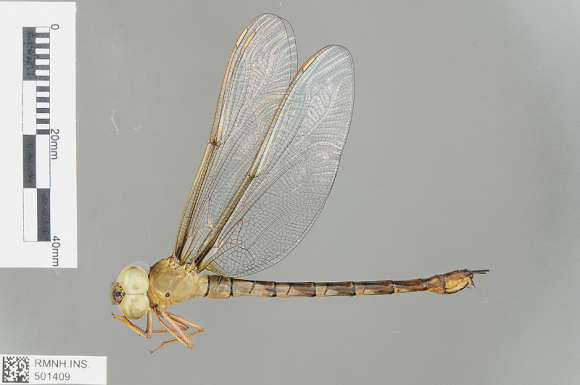
Female; Liberia, Nimba County, Yekepa-Gbeleyee Road © Dijkstra, K.-D.B.
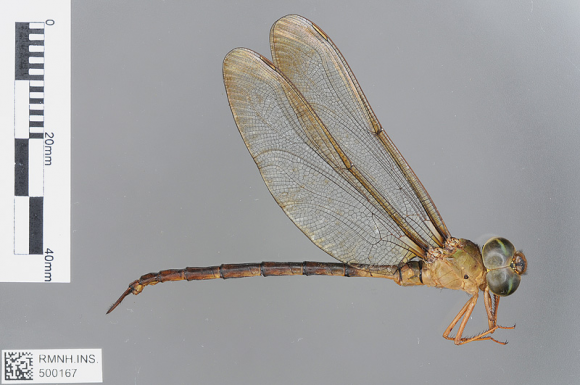
Male; Cameroon, South Province, Campo-Ma'an National Park © Dijkstra, K.-D.B., J. Kipping & K. Schuette
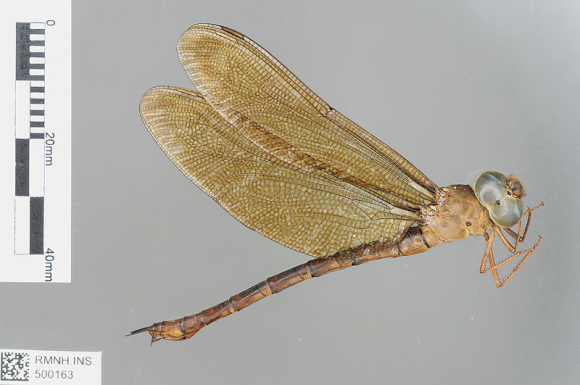
Female; Cameroon, South Province, Campo-Ma'an National Park (buffer zone) © Dijkstra, K.-D.B., J. Kipping & K. Schuette
References
- McLachlan, R. (1895). On some Odonata of the subfamily Aeschnina. Annals Magazine Natural History Series 6, 17, 409-425.
- Pinhey, E.C.G. (1962). New or little-known dragonflies (Odonata) of Central and Southern Africa. Occasional Papers National Museum Southern Rhodesia, 26, 892-911. [PDF file]
- Longfield, C. (1959). The Odonata of N. Angola. Part II. Publicacoes culturais Companhia Diamantes Angola, 45, 13-42. [PDF file]
Citation: Dijkstra, K.-D.B (editor). African Dragonflies and Damselflies Online. http://addo.adu.org.za/ [2024-04-30].

